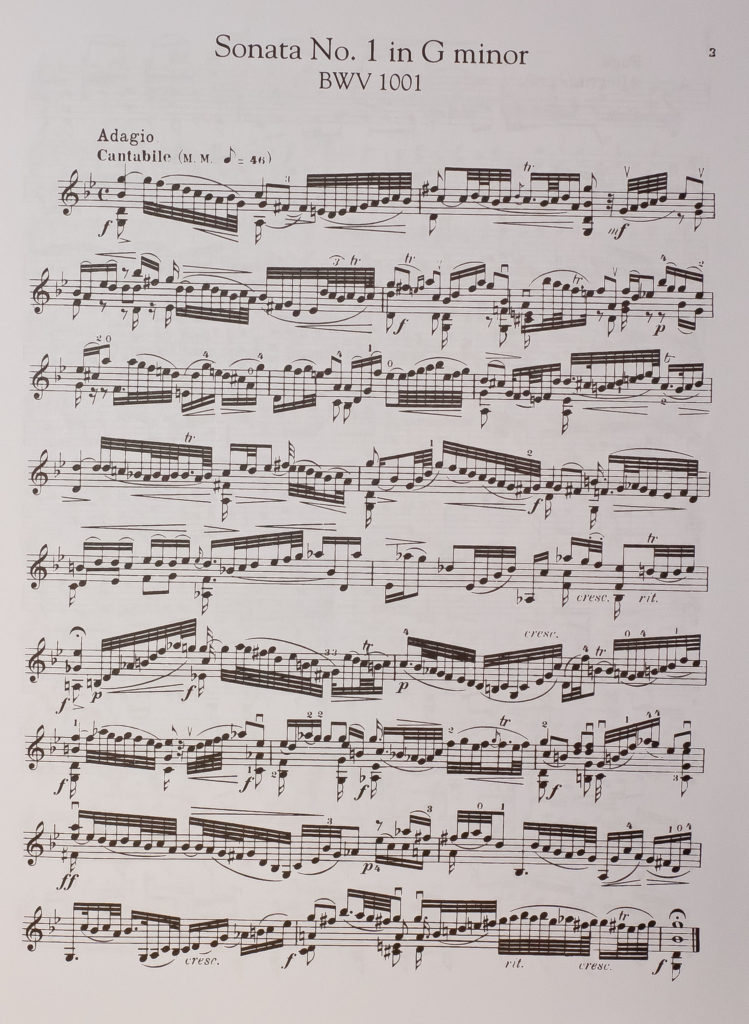It really doesn’t matter whether you are into classic rock, jazz, blues, pop, bluegrass, whatever, eventually every serious musician or music patron has to come to terms with the music of Johann Sebastian Bach. He is one of, if not the most significant composer, in the history of western music. It really doesn’t matter what instrument you play because Bach didn’t really care to much about instrumental specifics. He frequently moved his music around from instrument to instrument or onto any one of the many configuration or ensembles at his disposal. Obviously, string and keyboard players have the edge with the shear volume of Bach’s music that is available for their instruments. Mandolin players are luckier than most. Although, to my knowledge Bach didn’t compose specific mandolin music, players have access to the huge quantity of Bach’s violin, cello, viola, etc music that is out there. They also have the advantage in that the tuning of the mandolin is the same as the violin (G D A E – low to high). Admittedly the Mandolin doesn’t have the ability to sustain long notes like a violin but there are ways around that (the tremolo).
Over the years mandolin players have not been slow to pick up on the Bach Solo Violin Sonatas and Partitas. It is not only great music but it’s a great way to build up your mandolin technique. Even Bluegrass players have taken a turn at those compositions. One of note is an American mandolinist, singer, songwriter, and radio personality named Colin Thile (born February 20, 1981). He is best known for his work in the progressive acoustic trio Nickel Creek and the acoustic folk and progressive bluegrass quintet Punch Brothers. He also has a passion for Bach. Check the video below of Colin playing Bach’s Sonata No.1 in G Minor, BWV 1001. This is a Suite of four pieces: Adagio / Fuga / Siciliano / Presto.
Although the Bluegrass mandolin, to my ears, sounds a little thin for this style of music this is a great performance and should inspire us all.
The first time I took a look at the manuscript for the Sonata it threw me for a loop. I am more used to reading simple melody lines or chord diagrams so on first glance it was, and still is, pretty daunting. Take a look at the first page ………

Mike Marshall and Darroll Anger are two other North American performers who have dipped more than a toe in Bach’s deep musical waters.
Mandolin players can go even further afield in the huge Bach inventory. For example here the Israeli Madolinist Avi Avital and Harpist Bridget Kibbey playing a rearrangement of the Eb Major Sonata for Flute and Clavier, BWV 1031. This is the first movement the Allegro Moderato. Avi is a well known, award winning performer and Bridget is a much in demand solo and ensemble performer. The physical contrast between the tiny mandolin and the giant harp is eye catching and yet the sound balance between the instruments is spot on.
There are many, many more examples on YouTube so feel free to explore and, if you are a mandolin player, maybe work on a few pieces.
@@@@@@@@@@@
